Ultrasound-guided totally implantable venous access ports insertion technique
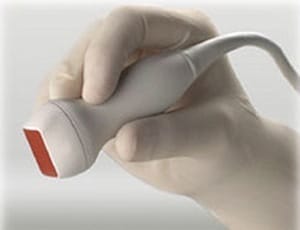
“This study aimed to evaluate the feasibility and safety of implantation of ultrasound (US)-guided TIVAPs via the right innominate vein (INV) for adult patients with cancer” Sun et al (2018).
CRBSI in patients with acute type II intestinal failure admitted to a national centre

Avoidance, prompt recognition and appropriate management of CVC-related infections are crucial components of IF care. However, there are few, if any, data on the occurrence of CVC-related infections in patients with acute, type 2, IF managed on a dedicated IF unit and no data on the salvage outcomes of infected CVCs in this group of […]
The benefit of point-of-care ultrasound in trauma

In this review, we discuss these applications and the supporting evidence for point-of-care ultrasound in trauma” Gleeson and Blehar (2018). Abstract: The use of point-of-care ultrasound in trauma is widespread. Focused Assessment with Sonography for Trauma examination is a prototypical bedside examination used by the treating provider to quickly determine need for intervention and appropriate […]
Central venous access device complication rates in adult critical care settings

Central venous access device complications and device failure is a prevalent and significant problem in the adult ICU, leading to substantial patient harm and increased healthcare costs” Takashima et al (2018). Abstract: OBJECTIVES: To examine the proportion and rate of central venous access device failure and complications across central venous access device types in adult […]
OPAT: Outpatient parenteral antimicrobial therapy review in the UK

This study reviews the current OPAT service provision in the UK and evaluates concordance with the national OPAT practice guidelines (standards of care)” Durojaiye et al (2018). Abstract: This study reviews the current OPAT service provision in the UK and evaluates concordance with the national OPAT practice guidelines (standards of care). We conducted a survey […]
Central venous catheter-related infections caused by Corynebacterium amycolatum

We observed that during cancer treatment, invasive corynebacterial infections occurred independent of certain factors, such as age and gender, underlying diseases and neutropenia” Carvalho et al (2018). Abstract: Bloodstream and venous catheter-related corynebacterial infections in paediatric patients with haematological cancer were investigated from January 2003 to December 2014 at the Brazilian National Cancer Institute in […]
Predicting IV fluid responsiveness and its importance in the treatment of shock
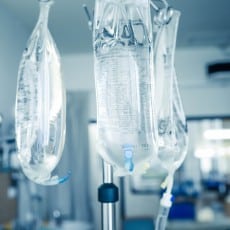
This review of literature highlights the differences between static and dynamic measurements of fluid responsiveness, and proposes a guide to choosing the most reliable methods of ascertaining volume responsiveness individualized to each patient” Jalil and Cavallazzi (2018). Abstract: Volume resuscitation is of utmost importance in the treatment of shock. It is imperative that this resuscitation […]
AV fistula complications associated with buttonhole access

In this study, we aimed to investigate whether the choice of cannulation technique – buttonhole with sharp or blunt needles – affected the development of arteriovenous fistula complications” Staaf and Uhlin (2018). Abstract: BACKGROUND: Haemodialysis requires a vascular access, most commonly an arteriovenous fistula, which many patients consider a lifeline. It is important to select […]
Ultrasound peripheral IV catheter insertion helps first time insertion

Ultrasound-guided peripheral intravenous line (PIV) placement is associated with increased success rates, decreased time to cannulation, and fewer skin punctures than traditional, landmark-based techniques” Gottlieb et al (2018). Abstract: Ultrasound-guided peripheral intravenous line (PIV) placement is associated with increased success rates, decreased time to cannulation, and fewer skin punctures than traditional, landmark-based techniques. However, it […]
IV flush solution for peripheral intravenous catheters in children
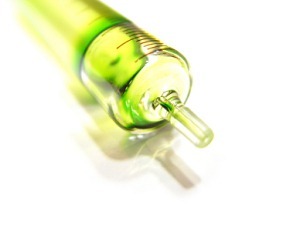
“Since heparin has negative side effects, the aim of this study was to examine whether or not there is any scientific support for intermittent flush with heparin being more efficient in extending the time in situ as compared to intermittent flush with sodium chloride” Gunes and Bramhagen et al (2018).
Central venous catheter insertion associated pericardial effusion

In our case, the patent vein of Marshall directly connected the coronary sinus with the left subclavian vein discovered in a cardiac arrest patient because of pericardial effusion during the insertion of a central venous catheter (CVC)” Butt et al (2018). Abstract: BACKGROUND: The persistence of a vein of Marshall (VoM) from the left subclavian […]
Central line-associated thrombosis in critically ill neonates
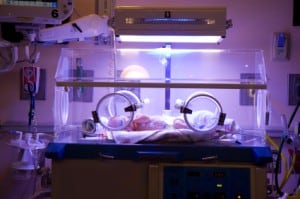
Our study identified risk factors for the development of clinically identifiable catheter-associated thrombosis (CT)” Lambert et al (2018). Abstract: OBJECTIVE: Our study identified risk factors for the development of clinically identifiable catheter-associated thrombosis (CT). STUDY DESIGN: We performed a retrospective cohort study of neonates in whom a central catheter was present. A total of 1,475 […]
Reducing needlestick injuries among healthcare workers in South Africa

Needlestick injuries (NSIs) are a common mechanism of exposure. Training in basic universal precautions and utilisation of safety-engineered devices (SEDs) are interventions known to reduce the risk of NSI” De Jager et al (2018). Abstract BACKGROUND: Healthcare workers (HCWs) are at increased risk of contracting various communicable diseases. Needlestick injuries (NSIs) are a common mechanism […]
Nurse-managed outpatient parenteral antibiotic therapy system

The RN-managed OPAT programme was associated with a significant reduction in readmissions” Bowley et al (2018) Abstract: OBJECTIVES: Evidence supports the safety and effectiveness of outpatient parenteral antibiotic therapy (OPAT). A registered nurse (RN)-managed multidisciplinary team OPAT model was implemented at our hospital. We evaluated the impact of the new OPAT model on readmissions during […]
OPAT readmission rates – what are the risk factors?

This study aimed to elucidate risk factors related to 30-day readmissions in patients who were discharged with OPAT at Mount Sinai Beth Israel (MSBI)” Huang et al (2018). Abstract: BACKGROUND: Outpatient parenteral antimicrobial therapy (OPAT) is a practical and effective way of delivering antimicrobial therapy, but may be associated with significant risk for hospital readmission. […]
Central venous catheterization in dogs – what is the role of ultrasound-guidance?

To compare time to achieve vascular access (TTVA) between an ultrasound-guided technique (UST) and landmark-based technique (LMT) for central venous catheter (CVC) placement in healthy anesthetized dogs” Hundley et al (2018). Abstract: OBJECTIVE: To compare time to achieve vascular access (TTVA) between an ultrasound-guided technique (UST) and landmark-based technique (LMT) for central venous catheter (CVC) […]
Neonatal pain control with sucrose or skin to skin care

To compare the efficacy of SSC with oral Sucrose for pain management in preterm neonates” Shukla et al (2018). Abstract: Objective: To compare the efficacy of SSC with oral Sucrose for pain management in preterm neonates. Methodology: Parallel-group, assessor-blinded randomized control trial conducted from February-June 2017 at a level 3B-NICU. Hundred preterm neonates (29-0/7 to […]
Red blood cell transfusion to treat or prevent complications in sickle cell disease
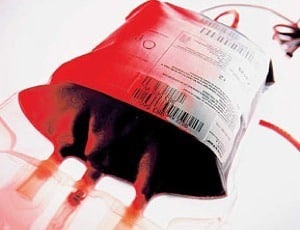
To summarize the evidence in Cochrane Reviews of the effectiveness and safety of RBC transfusions versus no transfusion, or restrictive (to increase the total haemoglobin) versus liberal (to decrease the haemoglobin S level below a specified percentage) transfusion, for treating or preventing complications experienced by people with SCD” Fortin et al (2018). Abstract: BACKGROUND: Globally, […]
Evaluating the use of vein visualization equipment

This study compared traditional short peripheral catheter (SPC) insertion methods with 2 vein visualization equipment models among a general patient population on a surgical step-down unit based on first-attempt success rates and the time required to achieve catheter insertion” Kanipe et al (2018). Abstract: This study compared traditional short peripheral catheter (SPC) insertion methods with […]
Extravasation injuries and associated treatment options in pediatric patients

The purpose of this study was to identify occurrences of peripheral infiltration injuries and examine treatment modalities used to treat pediatric patients who suffered such an injury” Odom et al (2018). Abstract: Peripheral infiltration is defined as the inadvertent delivery of nonvesicant fluid or medication into surrounding tissue that has the potential to harm the […]
Guidelines for the preparation and administration of blinatumomab infusions

Guidelines for the preparation and administration of blinatumomab in both inpatient and outpatient settings, as well as a standardized neurological nursing assessment, were developed to ensure safe and effective administration of blinatumomab” Szoch et al (2018). Abstract: Blinatumomab has shown great potential for patients with chemotherapy-resistant B-cell acute lymphocytic leukemia. Blinatumomab’s toxicity profile includes central […]
Complications and implications of therapy-related cardiotoxicity

The future holds promise with enhanced opportunities to use cardioprotectant drugs and biomarkers to prevent and detect early myocardial changes. Infusion therapy nurses must keep abreast of these developments to facilitate their roles as patient educators and advocates in the face of this toxicity’s prevalence” Boyle (2018). Abstract: The growing number of adult long-term cancer […]
Infusion phlebitis signs and symptoms associated with peripheral IV catheters

This study was undertaken to calculate the incidence of 8 signs and symptoms used for the diagnosis of phlebitis with peripheral intravenous catheters, or short peripheral catheters, and the level of correlation between them” Mihala et al (2018). Abstract: This study was undertaken to calculate the incidence of 8 signs and symptoms used for the […]
Using social media to diagnose Superior Vena Cava Syndrome

Here, we report a case of a patient who turned to social media when she had recurrent syncope and facial swelling” Charbonniez et al (2018). Abstract: Social media is becoming increasingly popular among the public. In 2017, Facebook had 2.2 Billion monthly active users [1]. Applications of social media in healthcare are growing. This includes […]
OPAT guidelines help with the economic burden of hospital admissions

Admissions for ABSSSI impose a substantial cost to US hospitals, with half of costs attributable to room costs. When extrapolated to all US patients admitted to the hospital for ABSSSI during 2014, had OPAT guidelines been universally followed, admissions may have been reduced by 14%, thereby saving US hospitals $161 million” Keyloun et al (2018). […]
Central veins dilation – Effect of lumbar elevation?

This study aimed to determine a more convenient patient position that can result in the largest central vein diameter” Gu et al (2018). Abstract: Background: Increasing the size of the central veins is required to increase the success rate of central line placement and decrease complication risk. Right-sided approach for the central veins, Valsalva maneuver, […]
Self-reported management of IV fluids in children with acute respiratory failure
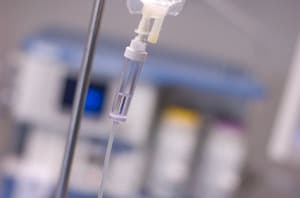
We sought to describe current IV fluid management in pediatric acute respiratory distress syndrome” Hassinger and Valentine (2018). Abstract: OBJECTIVES: Observational studies have shown that fluid overload is independently associated with increased morbidity in critically ill children, especially with respiratory pathology. It is unknown if recent evidence has influenced clinical practice. We sought to describe […]
Children undergoing hemodialysis – Iranian mothers’ experiences

Nurses are the healthcare team members who most frequently interact with mothers of children undergoing hemodialysis. They are therefore positioned favorably to provide the information and emotional support needed by these mothers” Pourghaznein et al (2018). Abstract: Purpose: To describe Iranian mothers’ perspectives regarding hemodialysis for their children. Design and Methods: This qualitative study was […]
Late onset neurological deficit after failed PICC insertion
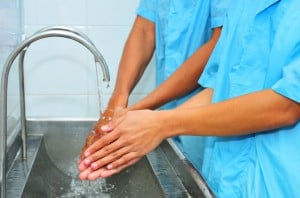
We describe a case of a pregnant woman who required parenteral nutrition and underwent an unsuccessful PICC insertion attempt resulting in arterial puncture, and who 34 days later presented with right upper limb paresthesia” Antunes et al (2018). Abstract: INTRODUCTION: Insertion of central catheters in peripheral vessels is a common procedure performed for a variety of […]
Removal and insertion of central venous catheters in cancer patients is associated with high symptom burden

To assess the symptom burden associated with CVC removal and insertion in cancer patients” Raad et al (2018). Abstract: OBJECTIVES: To assess the symptom burden associated with CVC removal and insertion in cancer patients. METHODS: We collected patient-reported symptom-burden outcomes for 60 consecutive cancer patients: 30 undergoing CVC removal and 30 undergoing CVC insertion. Cancer […]

